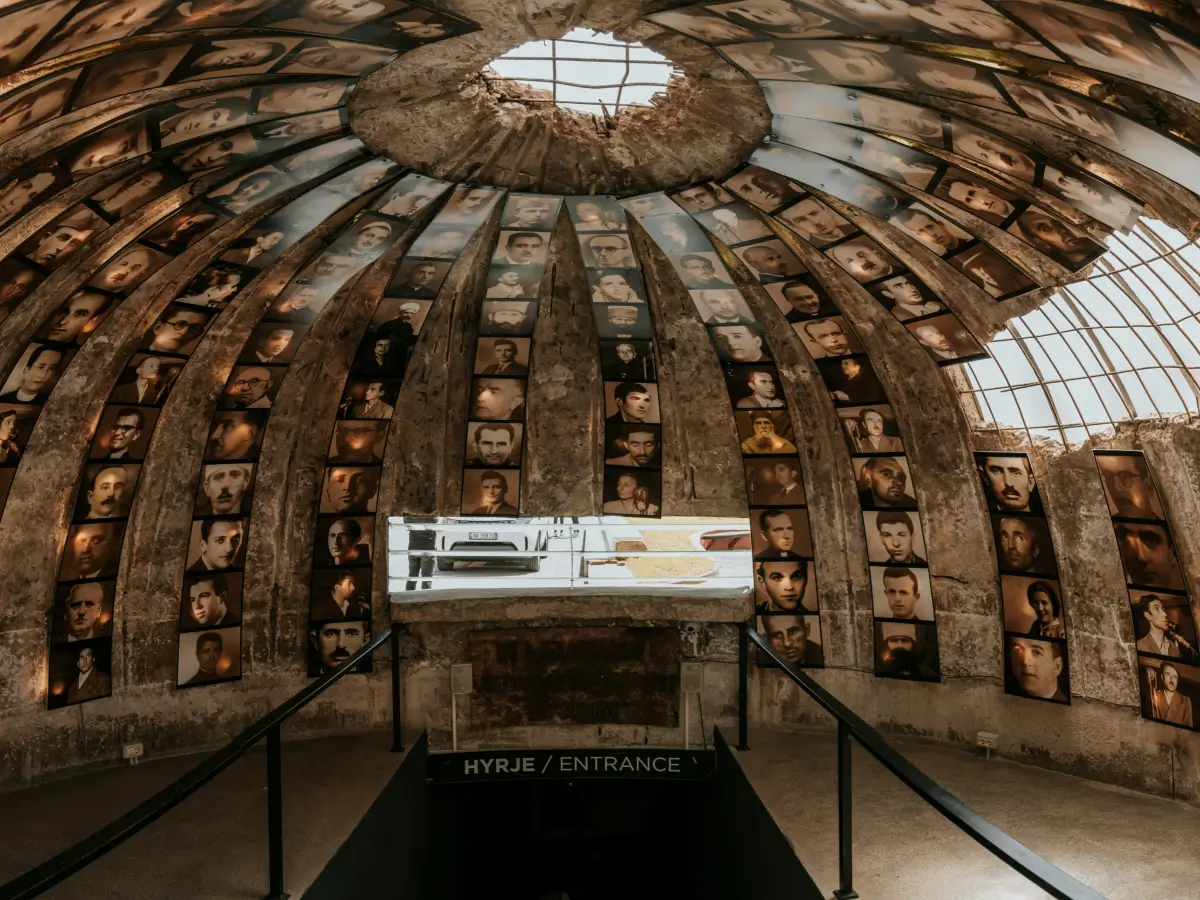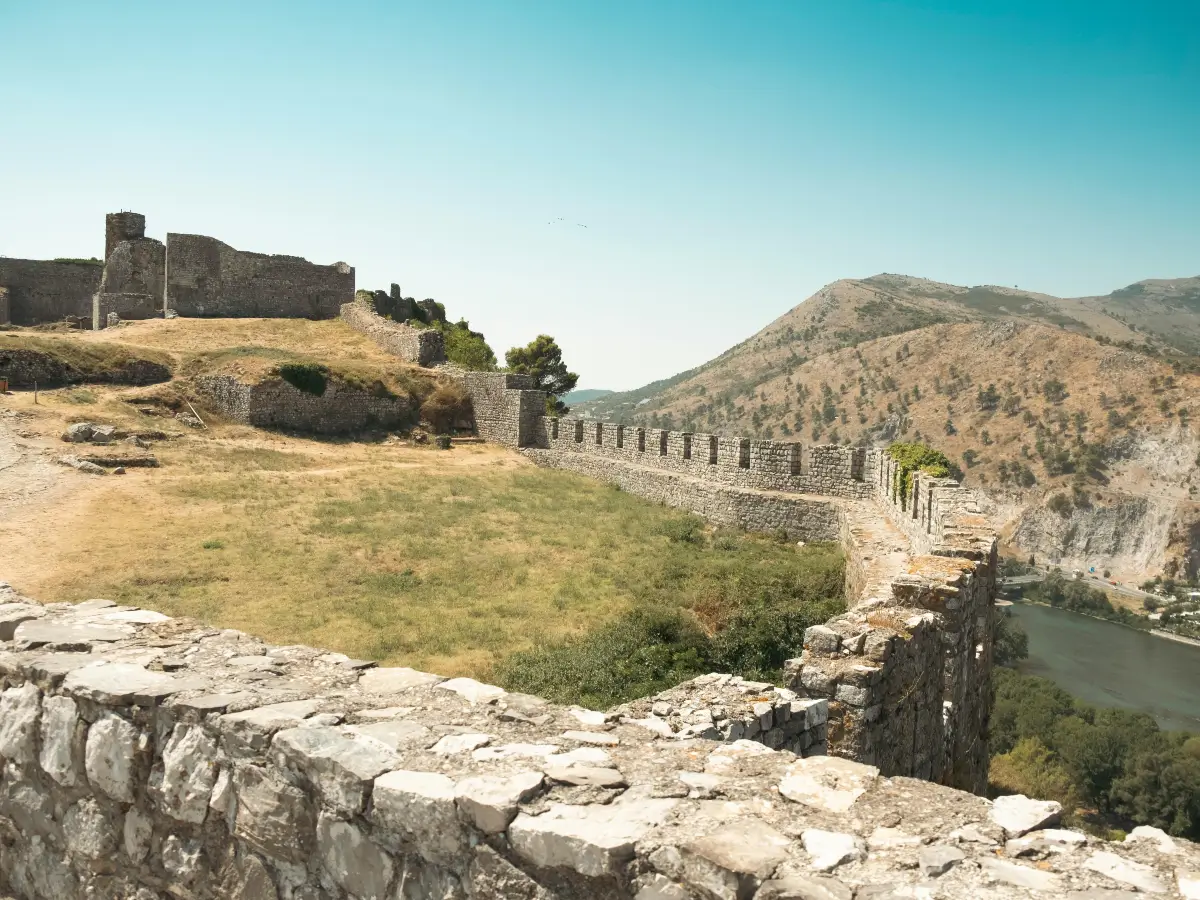Across Albania, it’s hard to travel far without seeing one — a small dome of concrete poking out of a hillside, beach, field, or urban corner. These are Albania’s bunkers — remnants of one of the most paranoid and isolated periods in modern European history.
Once built as a defense against imagined invasions, these bunkers have become part of the country’s landscape, identity, and even creativity. What was once a symbol of fear is now being reimagined — turned into art, museums, cafes, and stories that shape how Albania remembers and moves forward.

Why Albania built so many bunkers
During the communist regime of Enver Hoxha, Albania adopted a strict isolationist policy. The government believed the country could be attacked by foreign powers at any moment — including former allies. In response, a nationwide bunkerization program was launched in the 1970s and 1980s.
The goal was to make Albania impenetrable. Bunkers would protect every city, village, and border point. Over 170,000 bunkers were reportedly built, ranging from small single-soldier domes to large underground complexes.
These bunkers were:
-
Made of reinforced concrete, built to withstand artillery
-
Scattered across the entire country, from beaches to mountaintops
-
Designed for long-term defense, though never used in real combat
-
Built without a central use plan, often disrupting agriculture and infrastructure
-
Constructed at massive cost, draining the economy of needed resources
While they were meant to protect, for many Albanians they became symbols of fear, waste, and state control.
The physical and emotional legacy of the bunkers
For years after the fall of communism, bunkers were simply seen as unwanted leftovers. They were too strong to demolish, too scattered to remove, and too emotionally charged to ignore. Some were vandalized. Others became shelters for animals or storage units. Many were left abandoned.
But in recent years, something changed. A new generation began to see the bunkers not just as ruins — but as pieces of history, memory, and meaning.
Bunkers being reimagined across Albania
From museums to creative projects, bunkers are now being transformed into cultural and social spaces. Their raw presence and brutal design are being turned into opportunities for education, tourism, and art.
Examples of bunker transformations include:
-
Bunk’Art museums in Tirana, which explore both the communist era and Albania’s modern history
-
Cafés and bars built into old bunkers in cities and along beaches
-
Street art projects where bunkers are painted with colorful designs or used as installations
-
Tourist photo spots, especially near the coast or mountains
-
Memorials that preserve bunker sites as a reminder of Albania’s past
These adaptations allow Albanians and visitors to interact with history, rather than avoid it. They also offer space for reflection and reinterpretation of a complex national memory.

What the bunkers represent today
To many Albanians, the bunkers still carry emotional weight. For older generations, they are reminders of fear, silence, and wasted opportunity. For younger people, they are curiosities — symbols of a country that has learned from its past and is not afraid to confront it.
Bunkers have become:
-
Landmarks of identity, unique to Albania’s landscape
-
Symbols of resilience, reflecting how the country can turn past burdens into new meaning
-
Tools for storytelling, helping bridge the gap between history and the present
-
Unexpected assets, drawing global attention to Albania’s distinct history
A new chapter for old concrete
The story of Albania’s bunkers is not just about the past. It’s about what a country does with the scars it carries. By turning these structures into cultural icons, Albania is doing something rare — embracing a painful legacy without glorifying it.
Instead of tearing them down, Albanians are building something new around them: understanding, creativity, and connection.